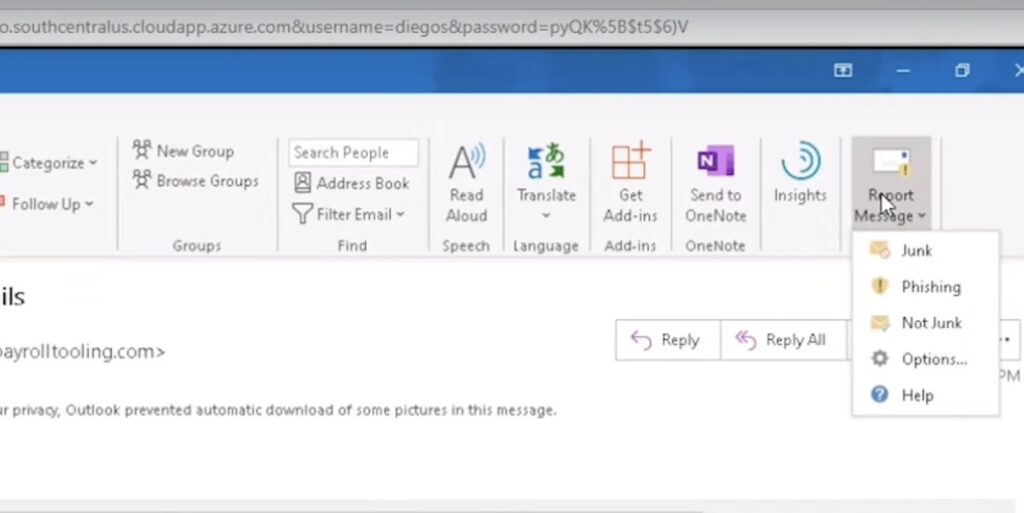1. Identifying and selecting the suspicious email
In the first step, take the time to identify the email you suspect to be a phishing attempt. Be cautious not to click on any links or download attachments from this email, as they may potentially be harmful. Once you’ve pinpointed the suspicious email, ensure to have it open in preparation for the next steps.
2. Locating the Report Message plugin
At this stage, you should be looking for the ‘Report Message’ add-on within your Outlook interface. This feature is typically available in most setups. However, should you find it missing from your toolbar, we strongly recommend reaching out to Impact Computing helpdesk or your IT support team for assistance.

3. Submitting a Phishing or Junk report
After clicking on the ‘Report Message’ add-on, you will need to select either ‘Phishing’ or ‘Junk’ from the given options. Upon doing this, the suspicious email will automatically be relocated to the ‘Deleted Items’ folder. Simultaneously, a report of the email will be sent to Microsoft for further review.

4. Understanding the aftermath of the report submission
Please be aware that once a report is submitted, Microsoft will use their advanced systems to analyze the email. This is a key step in Microsoft’s ongoing efforts to improve their phishing detection abilities. Do not expect a personal reply or response from Microsoft regarding your report. The review and analysis process is conducted automatically once the ‘Phishing’ option is selected.
Search in Outlook Email
In the context of safeguarding your Outlook inbox, an additional strategy that you can employ is efficient email search. Outlook offers robust search capabilities that can assist you in swiftly identifying potentially malicious correspondence. By utilizing keywords, sender information, or even specific date ranges, you can effectively filter through your emails to uncover suspicious messages. This approach can serve as a proactive measure to complement the reporting process outlined above.
Conclusion
In summary, managing and reporting phishing emails is an essential part of maintaining internet safety. This guide has provided a clear path to mastering this process, specifically within the Microsoft Outlook platform. Remember, the ultimate aim is not just to protect personal data but also to contribute to the collective security of all Outlook users. It’s crucial not to skip any steps, from identifying suspicious emails to ensuring you use the ‘Phishing’ or ‘Junk’ options within the ‘Report Message’ plugin. Always remember to consult your IT support if the plugin is absent from your toolbar. By taking these precautions, you play a crucial role in advancing Microsoft’s anti-phishing efforts and ensure a safer digital environment for everyone.